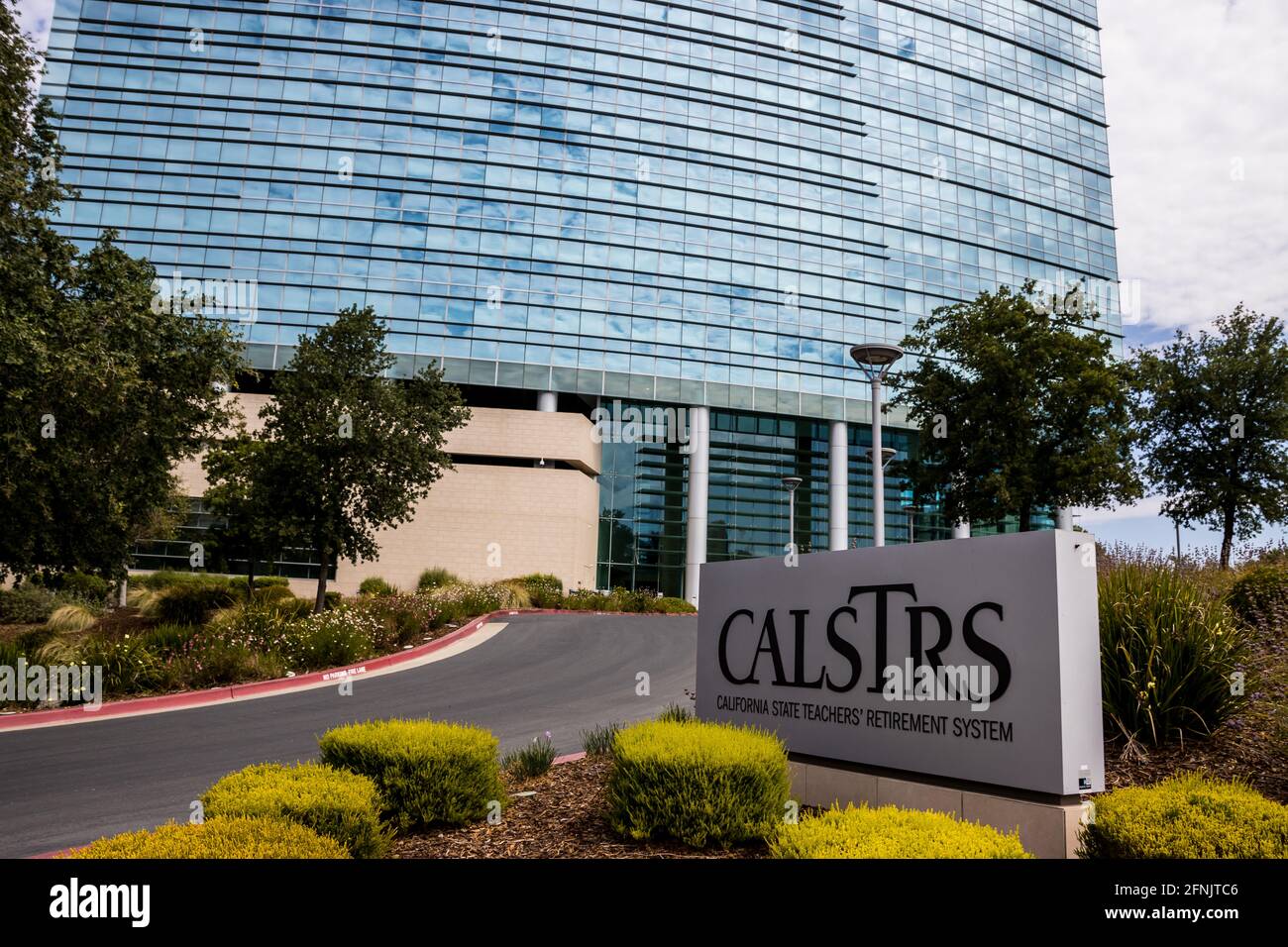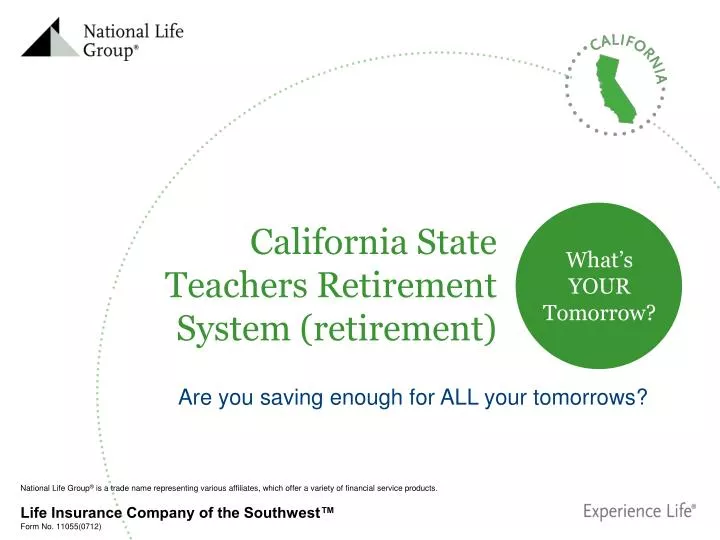
The CalSTRS (California State Teachers Retirement System) building in West Sacramento, CA Stock
The California Public Employees' Pension Reform Act of 2013 made significant changes to the benefit structure that primarily affect members first hired to perform CalSTRS creditable activities on or after January 1, 2013. As a result, CalSTRS has two benefit structures. Read more » Service retirement. Frequently asked questions. Read more »

The California State Teachers Retirement System building in West Sacramento California USA Stock
In California, teachers are a part of the California State Teachers' Retirement System. The system was established in 1913 and is the largest public retirement system in the state. The basic structure of California's teacher defined benefit (DB) pension is similar to that of other states. Unlike other retirement funds, a teacher's.

California State Teachers' Retirement System Pensions & Investments
In the 2022-2023 fiscal year Calstrs posted a 6.3% net return. The California State Teachers' Retirement System, the country's second-largest pension fund, may borrow more than $30 billion to.

California State Teachers Retirement System (CalSTRS) Main Office Building on the Riverfront in
CalPERS builds retirement and health security for California state, school, and public agency members. We manage the largest public pension fund in the US.

CalSTRS building in Sacramento, California, USA (California State Teachers Retirement System
California State Teachers' Retirement System Attn: Disclosure Forms, MS-4 100 Waterfront Place West Sacramento, CA 95605. Business Hours: Monday-Friday 8 a.m. to 5 p.m. (Pacific Time) We are closed on state holidays. About; ⋅.

California State Teachers' Retirement System Building Photograph by Jonathan Hansen Fine Art
my CalSTRS is your online resource to access and manage your personal information on file with CalSTRS. Log in now to: Access your Retirement Progress Report. Manage your beneficiary recipient designations. Change your state and federal tax withholding preferences. View your account balances. Complete and submit CalSTRS forms electronically.

Teachers in CA Receive More in Retirement Than Active Teachers in More Than Half of U.S. States
Earlier this year, the California State Teachers Retirement System issued an ominous statement: teacher retirements in California are projected to hit nearly record-breaking heights in 2021. The statement, which came in the form of a February blog post , said that the numbers will be almost as bad as the year after the Great Recession when more.

California State Teachers Retirement System CalSTRS in West Sacramento California . 7D11473
Members under this benefit structure include those first hired on or before December 31, 2012 to perform CalSTRS creditable activities or who performed CalSTRS creditable activities under a different retirement system, including Social Security. The date you want to retire: mm/dd/yyyy. Your date of birth: mm/dd/yyyy.

California State Teachers' Retirement System Pensions & Investments
The California State Teachers' Retirement System was established by law in 1913 to provide retirement benefits to California's public school educators from prekindergarten through community college. Today, CalSTRS is the largest educator-only pension fund in the world, and the second largest pension fund in the U.S. Read more » Sustainability

California State Teachers’ Retirement System Pensions & Investments
Summary: The California State Teacher's Retirement System (CalSTRS) is California's 2nd largest public employee pension fund, serving roughly 2% of California's population. At present, its unfunded liability is officially estimated at $71 billion. While much of the discussion over pension reform focuses on projected rates of investment returns, which greatly affects the required annual.

California State Teachers' Retirement System Pensions & Investments
Over the years, CalRTA has earned a reputation as a tireless watchdog over the California State Teachers' Retirement System (CalSTRS). We help ensure that the state honors its commitment to teachers and develops and supports fiscally prudent measures to improve the financial security of retired educators. Priceless Volunteer Service…

Exterior afternoon view of the California State Teachers' Retirement System, Sacramento
Building a sustainable future. CalSTRS advances sustainability practices that promote long-term value creation, responsible investment, and stewardship of our natural resources. Learn More.

CalSTRS building in Sacramento, California, USA (California State Teachers Retirement System
The California State Teachers' Retirement System (CalSTRS) provides retirement, disability and survivor benefits for California's 965,000 prekindergarten through community college educators and their families. CalSTRS was established by law in 1913 and is part of the State of California's Government Operations Agency.

PPT California State Teachers Retirement System (retirement) PowerPoint Presentation ID7029969
The longer you work as a teacher in California, the better your benefit will be. For example, a 30-year-old who starts their career today and teaches for 35 full years could earn 84% of their salary in retirement. CalSTRS also provides disability, death and survivor benefits, which are less common in defined contribution plans.

California State Teachers’ Retirement System (CalSTRS) Digital Deployment
For the security of your account information, be prepared to provide your Client ID or Social Security number and your date of birth. Phone: 800-228-5453 or 916-414-1099. Fax: 916-414-5040. These menu options are available by pressing the corresponding number: Account information. Pension2 program. Benefits Planning Services. 403bCompare program.

PPT California State Teachers’ Retirement System PowerPoint Presentation ID6768919
The California State Teachers' Retirement System, or CalSTRS, the nation's largest teachers' pension plan, lost 1.3% last fiscal year, its first decline too in more than a decade.